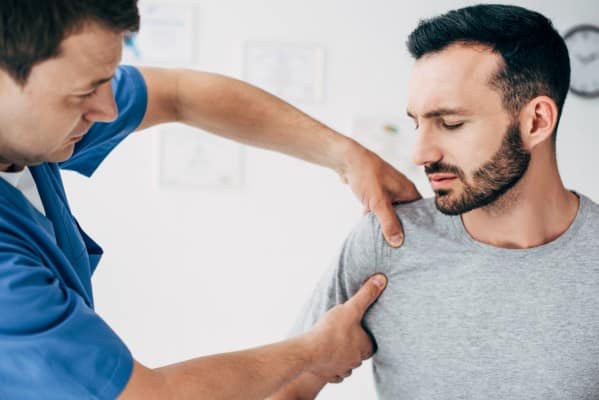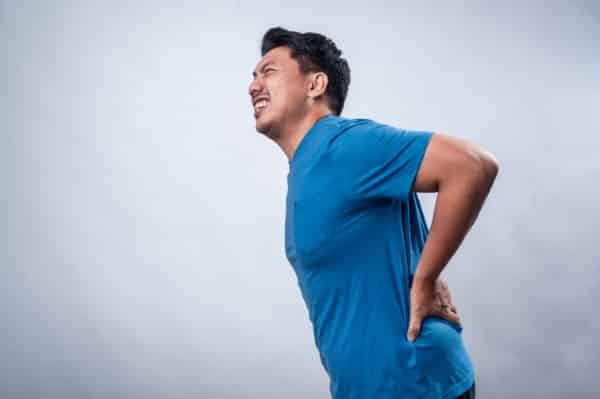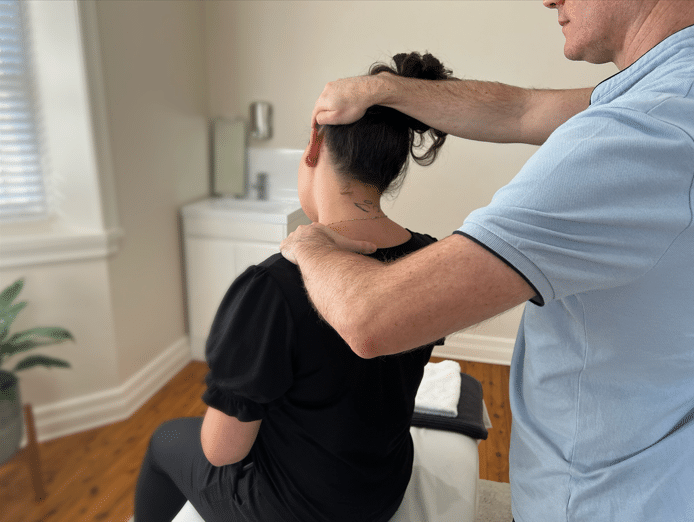- 02 9712 1736
- [email protected]
- 212 Great North Road, Five Dock, NSW 2046
- Open 7 days a week
Understanding Osteopathic Approaches to Lower Back Pain: Evidence-Based Solutions for Relief
In our modern world, where many of us spend long hours seated at desks or hunched over devices, lower back pain has become incredibly common.
Whether it’s brought on by desk work, lifting heavy objects, or the natural effects of aging, this type of pain can significantly impact your daily life. According to The Lancet, lower back pain is now the leading cause of disability worldwide, affecting an estimated 540 million people at any given time. If you’re one of them, chances are you’ve tried various treatments—some helpful, others less so.
Osteopathy offers a refreshing, whole-body approach. Rather than simply chasing symptoms, it focuses on the interconnectedness of your body systems, aiming to restore balance and function.
Osteopathic approaches offer effective, evidence-based solutions for lower back pain by addressing the whole body rather than just symptoms. Research shows that osteopathic manipulative treatment can significantly reduce pain and improve function through hands-on techniques that restore mobility and proper biomechanics. Unlike treatments that focus solely on pain sites, osteopaths assess overall movement patterns, posture, and lifestyle factors to identify root causes. This comprehensive approach combines manual therapy with personalized exercise recommendations and self-management strategies such as ergonomic adjustments and mindful movement. For lasting relief, osteopathic care empowers patients to take an active role in their recovery while providing professional guidance that integrates with other healthcare approaches when needed.

Osteopathic treatment is built on the principle that the body functions as a unified whole. When one part isn’t moving or functioning well, it can affect other areas—often in surprising ways. This is especially true with back pain.

To understand how osteopathy can help, it’s important to first understand what causes lower back pain. Your lumbar spine is made up of five vertebrae, along with discs, joints, muscles, ligaments, and nerves. Pain can stem from any of these areas.
Common causes include:
However, studies show that in up to 85% of cases, no specific physical cause can be pinpointed. This is known as non-specific lower back pain.
Modern pain science sheds some light here. Pain is not simply about damage to tissues. It’s a complex process that also involves your thoughts, emotions, stress levels, past experiences, and even cultural beliefs. That’s why two people with identical scan results can feel very different levels of pain.
.

Osteopathy is grounded in a holistic view of health. Founded by Dr Andrew Taylor, in the late 1800s, osteopathy is based on the idea that the body is capable of healing itself when given the right support.

Osteopaths take time to understand how your whole body moves and functions. A study in the Journal of Bodywork and Movement Therapies noted that osteopaths routinely assess posture, gait, joint mobility, muscle tension, and movement patterns to uncover contributing factors that might be overlooked in other types of care.
Osteopathy isn’t just intuitive—it’s supported by strong clinical evidence.

Osteopaths use a variety of gentle, hands-on techniques. These include:
A 2016 clinical trial published in the Journal of the American Osteopathic Association found that six sessions of osteopathic treatment over eight weeks significantly improved pain and function compared to ultrasound therapy.

Many people with back pain develop faulty movement patterns. Osteopaths address these by helping retrain how you move, improving strength, stability, and efficiency.
Osteopathy combines manual treatment with lifestyle advice, movement education, and tailored exercises. A 2018 study found that this multi-modal approach led to better long-term outcomes than using manual therapy alone.
Osteopathic care doesn’t end when you leave the clinic. You’ll also be given tools and guidance to manage your health between visits.
Gentle, controlled movement—rather than bed rest—is now widely recommended. Exercises like walking, gentle spinal rotations, and yoga-style movements such as the cat-cow stretch help maintain mobility and ease discomfort.

Osteopathy focuses on functional strength—how well your body moves as a whole. Research shows that core-focused movement patterns lead to better outcomes than isolating specific muscles.

Everyday habits matter. Your osteopath may suggest:
According to Applied Ergonomics, ergonomic interventions can reduce lower back pain in office workers by up to 60%.
Osteopaths also help you manage factors like sleep, stress, and activity levels—all of which influence how your body experiences pain. Improving these areas supports healing and builds resilience.
While many episodes of lower back pain improve with self-care, you should consider seeing an osteopath if:
At your first appointment, your osteopath will take a full health history and perform a thorough physical assessment. Treatment is tailored to your needs, preferences, and goals.
Osteopaths also collaborate with GPs and other allied health professionals when needed—ensuring your care is comprehensive and well-coordinated.

You don’t have to live with ongoing lower back pain. Osteopathy offers a comprehensive, evidence-based approach that treats more than just the symptoms. By restoring healthy movement, addressing underlying dysfunctions, and empowering you with personalised self-care strategies, osteopathy helps you take charge of your back health.
Everyone’s pain experience is unique. What works for one person may not be right for another. An osteopath can help you find a path that works for you—one that supports your well-being now and into the future.

Luis is an empathetic osteopath whose gentle approach has helped countless patients find relief from pain and discomfort. With his warm personality and expert hands, Luis creates personalized treatment plans that address both your immediate symptoms and long-term wellbeing. His patients appreciate his thoughtful nature and ability to explain complex conditions in simple terms.
Originating from over in New Zealand, Luis developed a love for osteopathy and manual care from a young age, due to its holistic nature. With a special interest in manual therapy, anxiety and related breathing activities. You will find the care you need with Luis.

Forest Lodge, Annandale, Glebe, Leichhardt, Balmain, Haberfield, Canada Bay, Rozelle, Rodd Point, Wareemba, Stanmore, Petersham, Lilyfield, Hunters Hill, Enfield, Cabarita, Mortlake, Rhodes, Burwood Heights, Birchgrove, Gladesville, Huntleys Point, Abbotsford, Ashfield, Croydon Park, Croydon, Chiswick, Russell Lea, Burwood, Strathfield, Concord, Drummoyne, North Strathfield, Liberty Grove, Dulwich Hill, Lewisham, Camperdown, Ashbury, Homebush, Homebush West, Woolwich, Henley, Summer Hill, Sydney Olympic Park
About
Five Dock Osteopathic & Chiropractic is located in Canada Bay, in Sydney’s Inner West. Servicing suburbs including Burwood, Croydon, Drummoyne, Five Dock, Haberfield, Concord, Abbotsford, Chiswick, Leichhardt, Wareemba, Russell Lea, Summer Hill, Strathfield.
Clinic hours
Monday, Tuesday, Thursday 7AM – 7PM
Wednesday, Friday 7AM – 6PM
Saturday 7AM – 2PM
Sunday 8AM – 2PM
Contact details